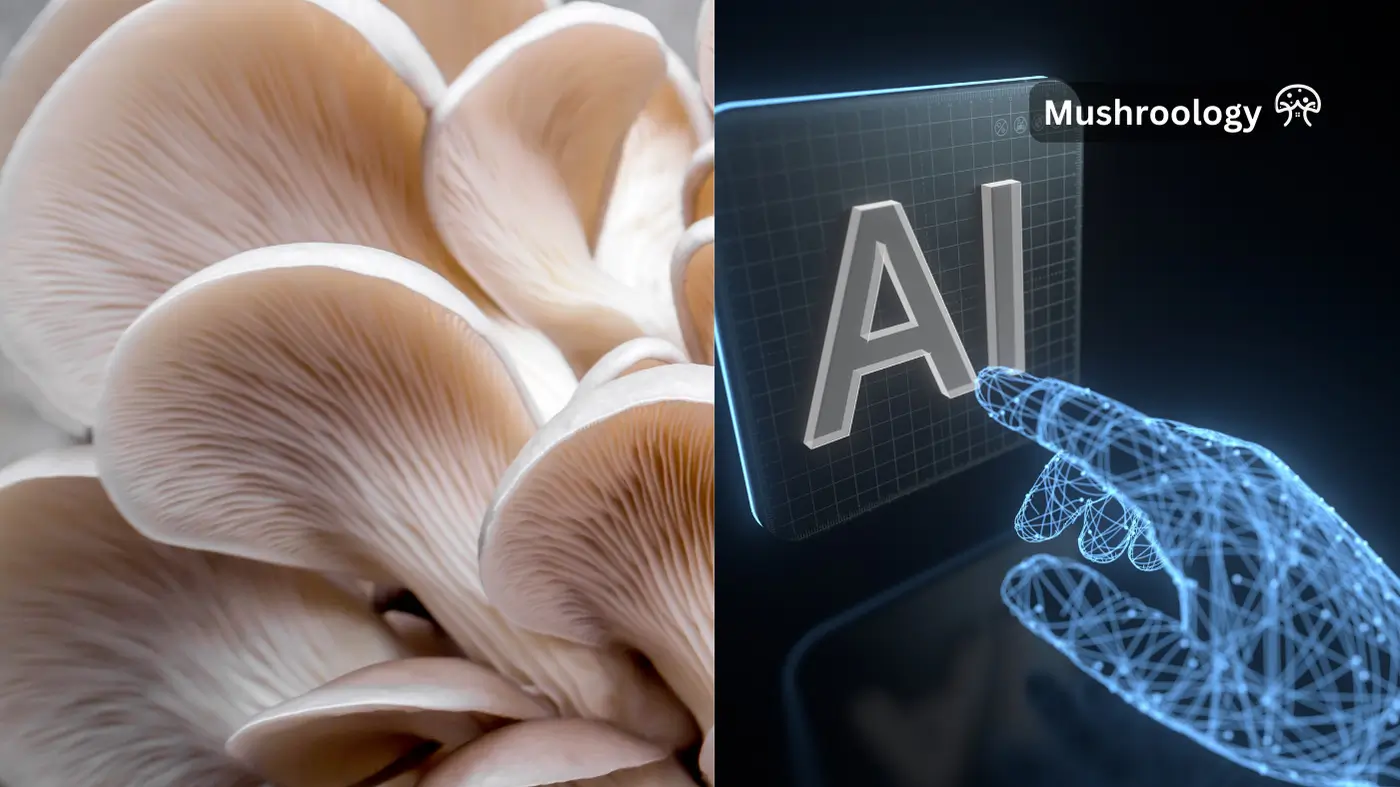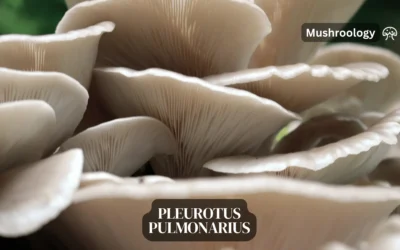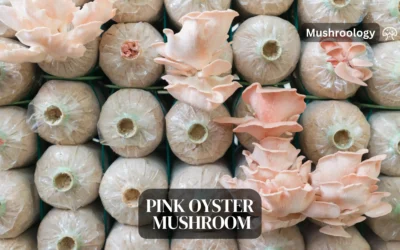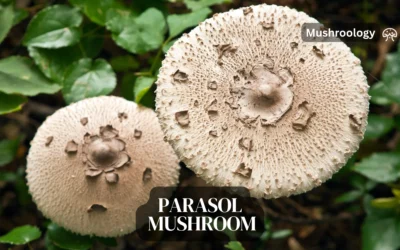Artificial intelligence (AI) is making significant strides in various industries, and agriculture is no exception. One of the most exciting applications of AI is in mushroom cultivation. By leveraging advanced technologies like machine learning, computer vision, and the Internet of Things (IoT), farmers can optimize growing conditions, improve yields, and reduce labor costs.
The Role of AI in Mushroom Cultivation
Artificial Intelligence (AI) is revolutionizing mushroom cultivation by automating and optimizing various aspects of the farming process. This integration of AI technologies helps in improving yield, reducing labor costs, and enhancing disease detection and prevention. Let’s see how AI is being utilized in mushroom farming:
Machine Learning
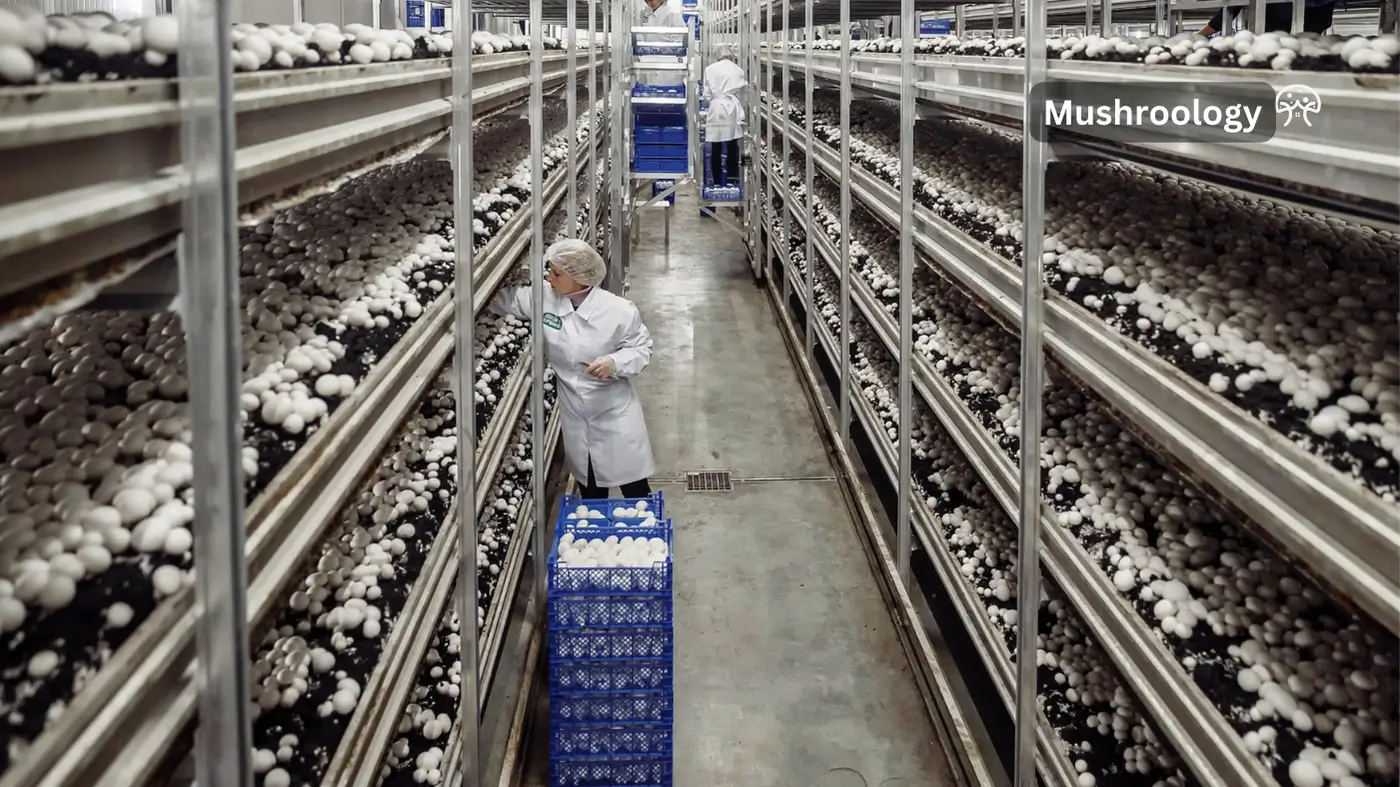
Predictive Analytics and Yield Optimization:
Machine learning algorithms are employed to analyze data from sensors and other sources to predict the best conditions for mushroom growth. These algorithms learn from historical data and continuously improve their accuracy over time.
For instance, the MUSHNOMICS project uses AI-driven algorithms to predict mushroom yields by analyzing data collected from IoT devices, and optimizing environmental conditions such as temperature, humidity, and CO2 levels.
Computer Vision
Growth Monitoring and Disease Detection:
Computer vision systems use cameras and image processing algorithms to monitor mushroom growth and detect diseases early. These systems analyze the size, shape, and color of mushrooms to identify any abnormalities that may indicate disease or suboptimal growth conditions.
For example, MycoSense has developed the MycoSense Spotlight, which uses AI and computer vision to assist in mushroom picking and early disease detection.
Quality Classification:
Computer vision is also used for quality classification of mushrooms. This involves identifying and grading mushrooms based on their visual characteristics, ensuring that only high-quality produce reaches the market.
Internet of Things (IoT)
IoT devices are deployed within mushroom farms to continuously monitor environmental conditions such as temperature, humidity, and CO2 levels. These devices collect real-time data, which is then fed into AI systems for analysis. The AI systems use this data to make real-time adjustments to optimize growing conditions.
For example, the AI-based automatic climate control system for white button mushrooms uses IoT devices to manage climate conditions in the growing hall, ensuring optimal growth at different stages of mushroom development.
Automated Growing Systems
Automated systems control variables like temperature, humidity, and CO2 levels, ensuring optimal growing conditions. These systems reduce labor costs by minimizing the need for human intervention and improve yield and quality by maintaining consistent environmental conditions.
Mycro Harvest, for instance, has developed a shipping container-sized unit that uses affordable automation combined with AI monitoring to grow mushrooms at scale.
Robotics
Robotics combined with AI is used to automate the harvesting process. Tupu has introduced the industry’s first harvesting robot for gourmet mushrooms, which uses advanced camera vision AI to automate the harvesting process, improving efficiency and reducing labor costs.
Data Analytics and Big Data
AI systems utilize dynamic data-driven analytics to process and analyze the data collected by IoT devices. This involves using big data analytics to handle large volumes of data and extract meaningful insights that can inform yield predictions and optimize growing conditions. The MUSHNOMICS project, for example, employs big data analytics to manage production in real-time and optimize environmental conditions.
Smart Sensors
Smart sensors are used to monitor environmental conditions and collect data about the mushroom growing area. These sensors provide real-time data that is analyzed by AI systems to make precise adjustments to the growing conditions.
Benefits of AI in Mushroom Farming
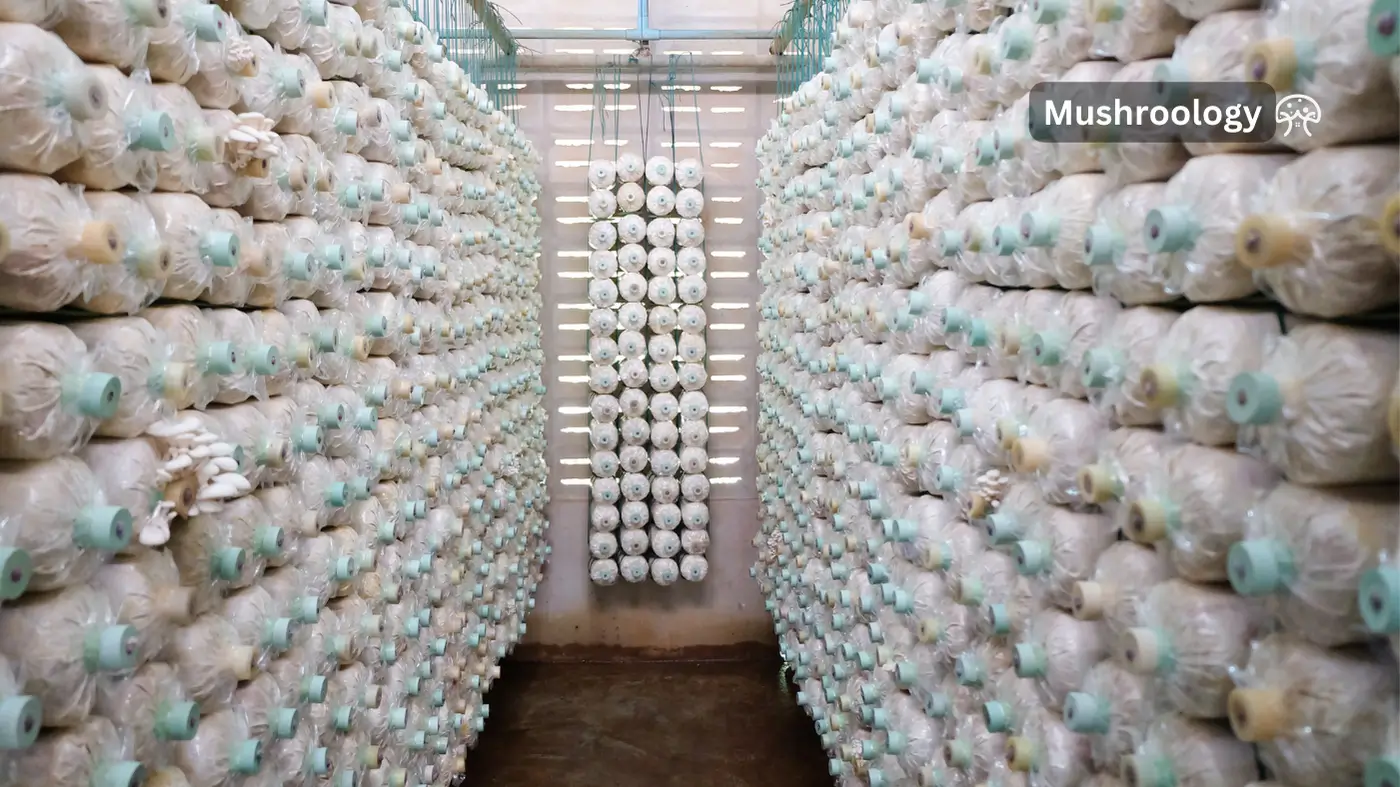
Improved Yield and Quality
AI systems can analyze vast amounts of data to identify the optimal conditions for mushroom growth, leading to higher yields and better quality mushrooms. For example, Tupu’s AI-driven technology allows for the cultivation of organic gourmet mushrooms in urban environments, ensuring fresh and high-quality produce.
Reduced Labor Costs
Automation through AI reduces the reliance on manual labor. Automated systems can monitor and adjust growing conditions without human intervention, significantly cutting down labor costs. Mycro Harvest’s container-sized units exemplify this by using affordable automation combined with AI monitoring.
Enhanced Disease Detection and Prevention
AI-powered systems can detect diseases and pests early, preventing major crop losses. MycoSense, for instance, uses advanced neural networks for early disease detection, helping farmers maintain healthy crops and improve yields.
The most innovative AI technologies currently used in mushroom cultivation include a variety of advanced systems and methodologies that leverage artificial intelligence, machine learning, computer vision, and IoT. Here are some of the key technologies and their applications:
1. AI-Driven Yield Prediction and Environmental Control
MUSHNOMICS Project:
- AI Algorithms for Yield Prediction: The Mushnomics project focuses on developing AI-driven algorithms to predict mushroom yields accurately. These algorithms analyze data from IoT devices to manage production in real-time, optimizing environmental conditions such as temperature, humidity, and CO2 levels.
- ICT Platform for Data Exchange: Mushnomics also aims to create an ICT platform that facilitates data exchange across the entire mushroom value chain, from production to points of sale, enhancing decision-making and operational efficiency.
2. Automated Growing Systems
General Industry Innovations:
- Automated Environmental Control: Automated systems control variables like temperature, humidity, and CO2 levels, ensuring optimal growing conditions. These systems reduce labor costs by minimizing the need for human intervention and improve yield and quality by maintaining consistent environmental conditions.
3. Computer Vision and Disease Detection
MycoSense Spotlight:
- AI-Assisted Harvesting: MycoSense has developed the MycoSense Spotlight, which uses AI and computer vision to assist in mushroom picking. The system marks mushrooms that are ready for harvest, increasing efficiency and ensuring uniformity in size and quality.
- Early Disease Detection: MycoSense is also working on intelligent software for early disease detection, which is crucial for preventing crop loss and maintaining healthy mushroom crops.
4. Robotics and AI Integration
Tupu:
- Harvesting Robots: Tupu has introduced the industry’s first harvesting robot for gourmet mushrooms. This robot, combined with advanced camera vision AI, automates the harvesting process, improving efficiency and reducing labor costs.
- Decentralized Farming System: Tupu’s system integrates robotics and AI to grow organic gourmet mushrooms in urban environments, making fresh produce more accessible and reducing supply chain disruptions.
5. Smart Sensors and Data Analytics
Clever Mushroom:
- Portable AI and IoT System: Clever Mushroom utilizes smart sensors, data analytics, robotics, and AI to enhance mushroom cultivation. Their system improves resource efficiency, increases harvest yields, and reduces waste by continuously monitoring and adjusting growing conditions.
6. AI-Driven Smart Farms
Mycro Harvest:
- AI Monitoring and Automation: Mycro Harvest has developed a shipping container-sized unit that uses AI to monitor and adjust environmental conditions automatically. This system is designed to be cost-effective and scalable, making it accessible for farmers to achieve higher production efficiency.
Challenges and Future Prospects
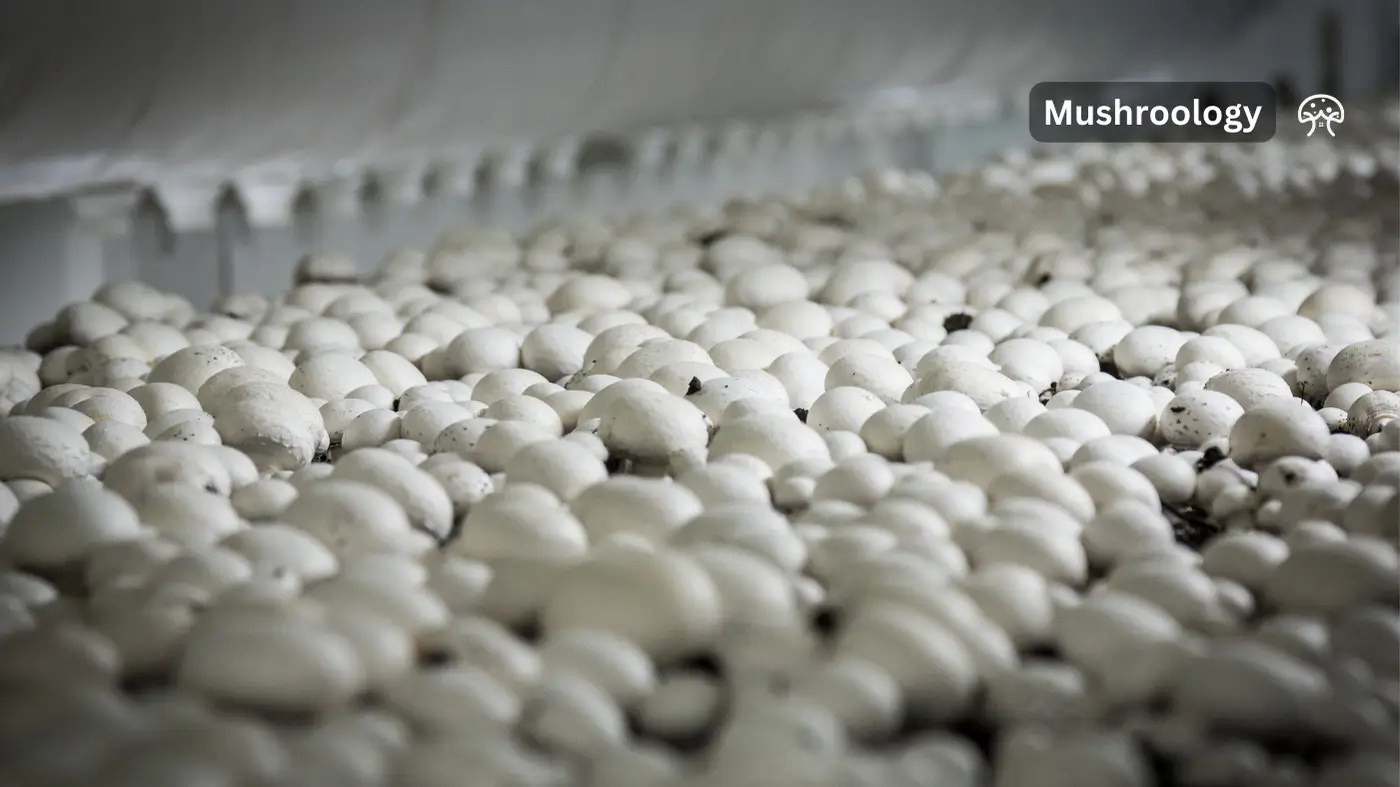
Challenges
Despite the benefits, there are challenges in adopting AI technology in mushroom farming. High initial costs and the need for technical knowledge can be barriers for small-scale farmers. Additionally, ensuring data accuracy and managing the complexity of AI systems require ongoing effort and expertise.
Future Prospects
The future of AI in mushroom cultivation looks promising. As technology advances, we can expect more sophisticated AI systems that offer even greater precision and efficiency. Innovations like AI-driven yield prediction and automated harvesting robots are set to revolutionize the industry further.
For instance, future AI systems could integrate more advanced machine learning models that predict not only the best growing conditions but also market demand, helping farmers optimize their production schedules.
Stay tuned to see how these technologies continue to transform the mushroom farming industry. By staying updated with the latest AI technologies, farmers can leverage these advancements to achieve greater efficiency and sustainability in their operations.

